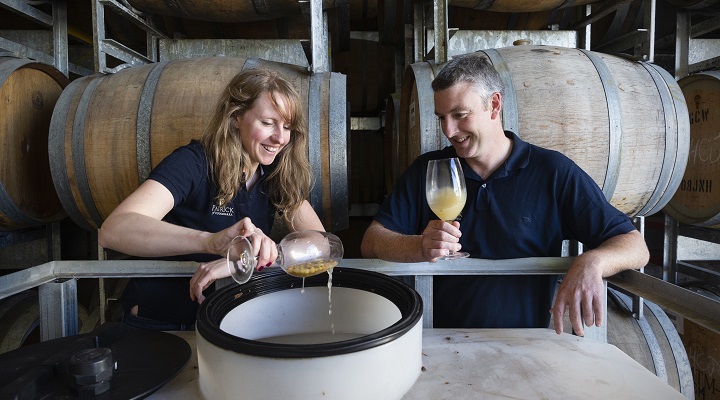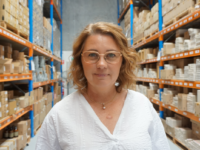Enterprise: Patrick of Coonawarra
What they offer: This South Australian winery balances the heritage of its highly reputed founder with innovation, making wines that suit the palates of today’s consumers.
Luke Tocaciu is a second-generation winemaker. Luke’s father, Patrick, spent 25 years working for a number of well-reputed wineries before making his first Cabernet under his own, eponymous label in 1998. Patrick spent the next few years establishing more vineyards in Wrattonbully, South Australia, growing a range of grape varieties. He opened a cellar door in 2004. At this time, Luke was just starting out on his own winemaking journey, having worked a vintage in Coonawarra after high school. Luke progressed in the field, going on to graduate with a degree in oenology from the University of Adelaide and completing vintages in the Barossa, Clare and Sonoma, California. When Patrick unexpectedly passed away in 2013, Luke took over the reins of the family business.
“We have been making single-site wines since we started, but had never really promoted that fact.”
The business was hit hard by the pandemic. “Our markets to restaurants and bottle shops came to a grinding halt when COVID first started, including cellar-door sales,” Luke explains. “Fortunately, we recognised the need to pivot early into the only space we had to communicate with customers, online.”
He launched a virtual cellar door, where anyone could log into a virtual meeting room and have a chat. This developed into live Facebook/Instagram videos on a variety of topics. Luke also hosted a number of virtual wine tasting nights, sending little bottles around the country and getting everyone who had joined him online to taste them at the same time.
“If it wasn’t for the support of our regular customers, it would have been a lot harder,” Luke says. “Pre COVID, and maybe due to the size of our business, we had never been a team to put all our eggs in one basket, we’d been showing ‘the love’ to all customers of the wine industry for a long time.” This meant that when COVID hit, Luke and the team already had the structure in place to survive solely on digital sales. “It also meant that 100 per cent of energy was spent on the one channel, and this made a difference, with D2C sales increasing, allowing that channel to carry more of the weight,” Luke says.
Patrick of Coonawarra have recently released a new range of ‘single-site’ wines that emphasise the quality and characteristics that come with growing vines on the unique Terra Rossa soil of the Coonawarra region. “We have been making single-site wines since we started, but had never really promoted that fact,” Luke says. “The new Single Sites Range emphasises that we own all of our own vineyards and that three of our wines – Home Block Cabernet, Joanna Shiraz and Block 5 Aged Riesling – are from one single vineyard block. This means they reflect the site in which they are grown and the soil, climate and season all result in the nuances that make these wines premium and unique,” Luke avers.
Luke is conscious of honouring the winery’s heritage and his father’s legacy while satisfying his desire to innovate and meet the ever-changing requirements of consumers. “This has been one of the biggest challenges when it comes to re-branding the business and our labels,” Luke explains. “The heritage comes in with the styles such as single sites, particularly the Home Block and Block 5 Aged Riesling. These wines were favourites of my father’s and are made in the same styles that he used to make. The innovation comes in with the new release of our Méthode Range, designed to push boundaries of winemaking and styles, which appeal to an ever-changing consumer.”
Luke is excited about the future, despite the challenges he foresees. “The industry has a few tough years ahead, with an oversupply of fruit and wine, mainly due to China’s tariff on wine imports,” he says. “However, the team I have around me is exceptional and gives me confidence to keep making great wine and trying new things.”
This article first appeared in issue 36 of the Inside Small Business quarterly magazine
















